Table of contents of the article
ToggleGrape leaf worm is a pest that attacks grape leaves, causing damage and reducing the quality of the crop. In this article on your website, WORLD OF PLANTS, we will review prevention and control methods to maintain the health of the vines.
Symptoms of grape leaf worm
- Scientific name : Celerio lineata livornica
- the family : Lepidoptera
- Type of disease : Insect
- Small caterpillars pierce the leaves at the beginning of the infection, and when the caterpillar becomes very voracious, it devours the entire leaf. This causes damage to the vegetative complex, reducing the production rate.
- Symptoms appear as small circles in the center of the leaf.
- Symptoms also appear in the form of an eroded arc around the perimeter of the leaf.
- The most important aspect that is noticed is that the larvae of this pest are very ferocious and voracious, as one larvae can devour 100 leaves within several days.
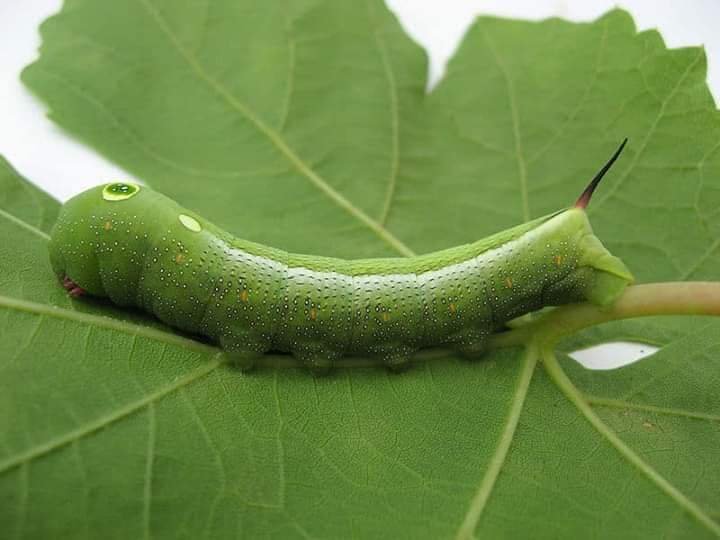
Description of the grape leaf worm
- A spindle-shaped butterfly with narrow wings. The dominant color is brown to olive-tan on the back wing, and the red color extends to the top.
- The caterpillar is large, green in color, with a red line running down the middle of the body from the top, and two yellow lines running on either side of it, interrupted in each ring by a yellow spot with a black center.
- The virgin is shackled and brown
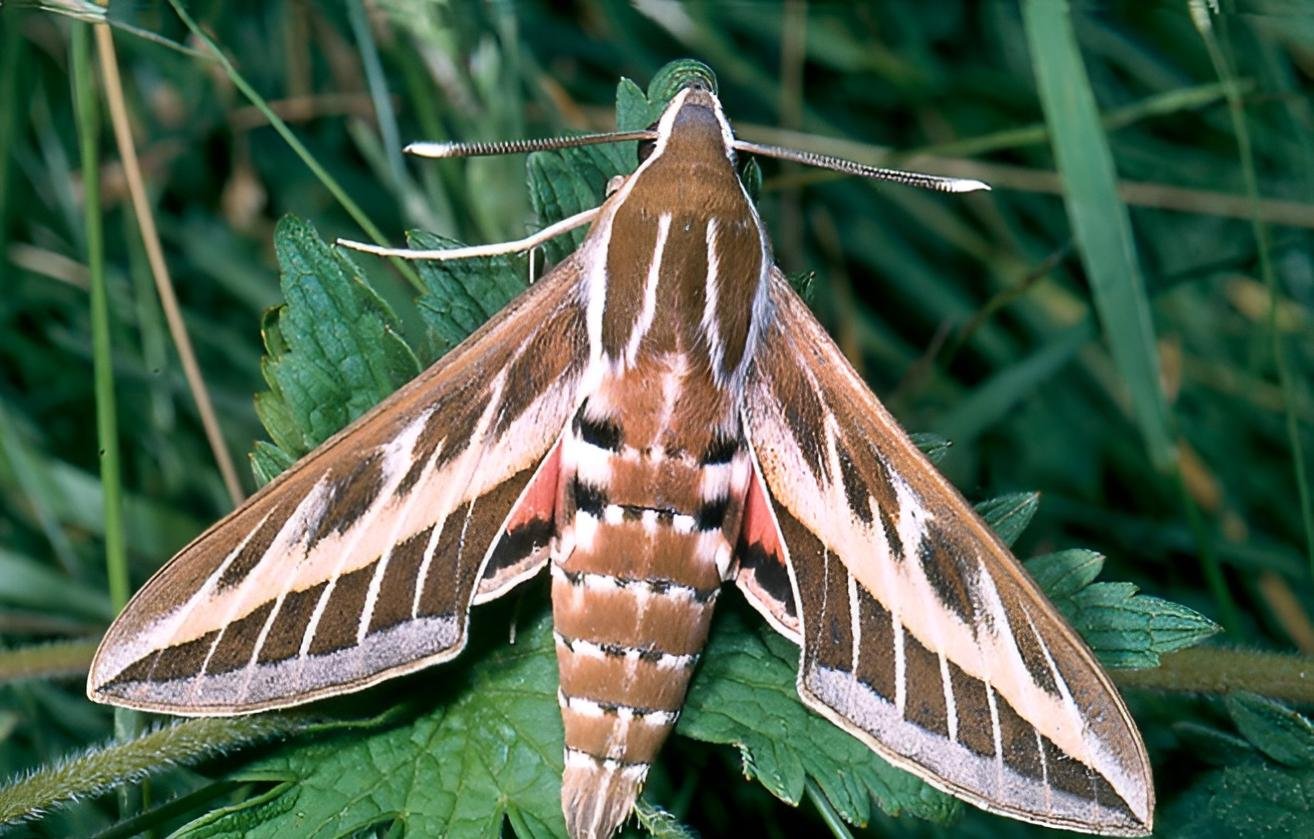
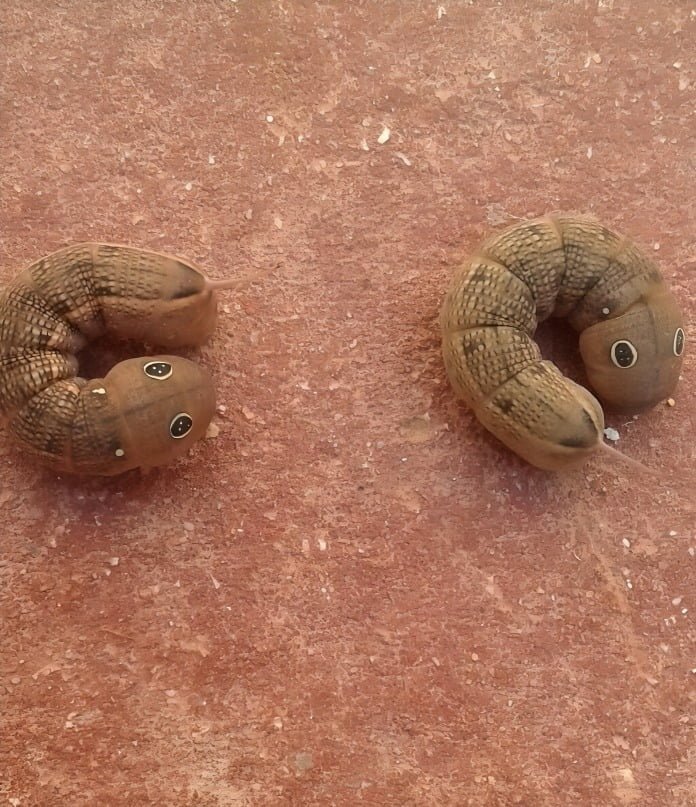
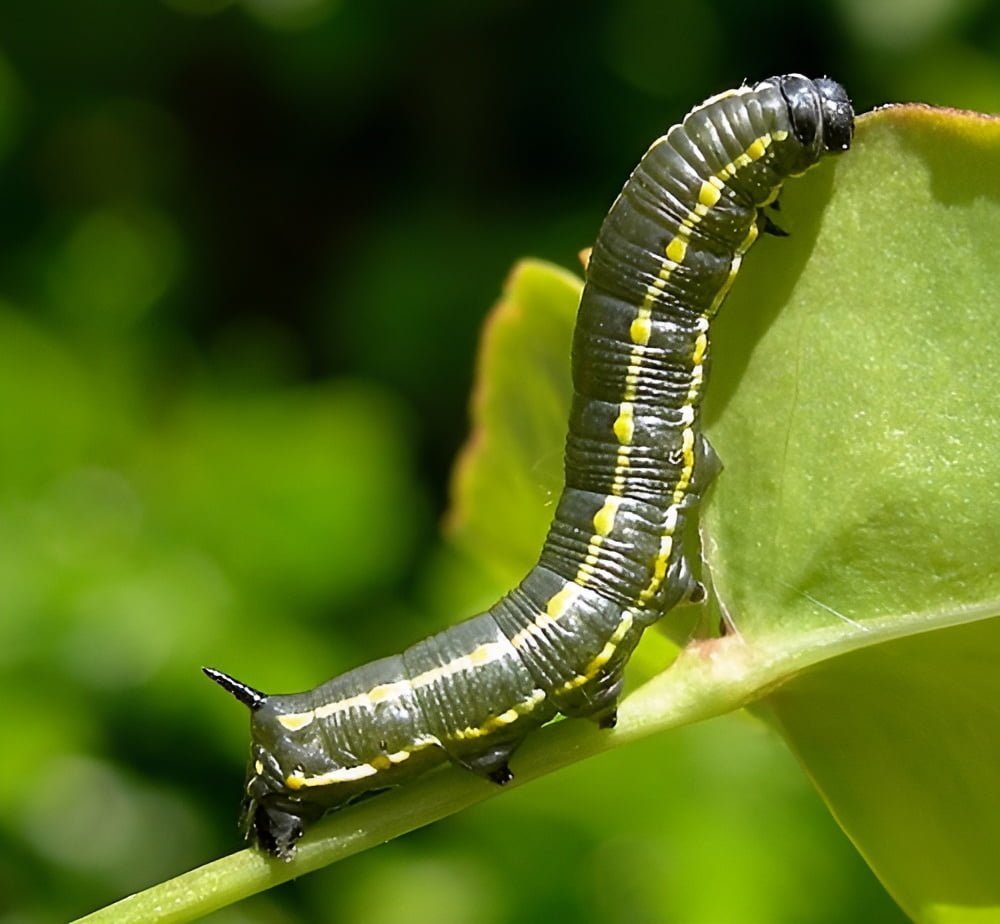
Causes of grape leaf worm
- Insect hosts: The insect spreads on sweet potatoes, tobacco, strawberries, and some herbs, so the presence of one of these families next to the grape tree leads to the infestation being transmitted to it.
- The presence of other insect pests.
- Failure to take care of coating grape trees with limescale during the hot summer months (August, June) contributes to infection caused by high temperature, as it causes wounds on the tree.
- Warm weather.
- Do not plow the soil deeply.
- Neglecting pruning.
- Failure to carry out appropriate agricultural operations for the tree, including balanced fertilization and irrigation.
- Leaving weeds and plant residues without removing.
Suitable conditions for the spread of grape leaf worm
- Climatic conditions (mating requires good temperature and low humidity)
- The presence of infected neighboring crops.
- The presence of harmful weeds under the grape tree.
Grape leaf worm development cycle
- She spends the winter in the form of a virgin inside a clay cocoon that turns into a butterfly at the beginning of April
- The butterfly lays its eggs on the upper surface of the leaves (50-100 eggs).
- The pupae feed on the leaves of the plant, turn into pupae in July, and give the second generation in August
- The insect has two generations per year
Losses from the spread of grape leafworm
- It strips trees of their leaves
- Infected plants are weakened and encourage new pests such as (apple stem borer M., wood and stem borers, vine stem borer, grape phylloxera, night moth)
- The economic damage threshold was estimated to be between 35% in the case of a weak injury and 80% in the case of a severe injury.
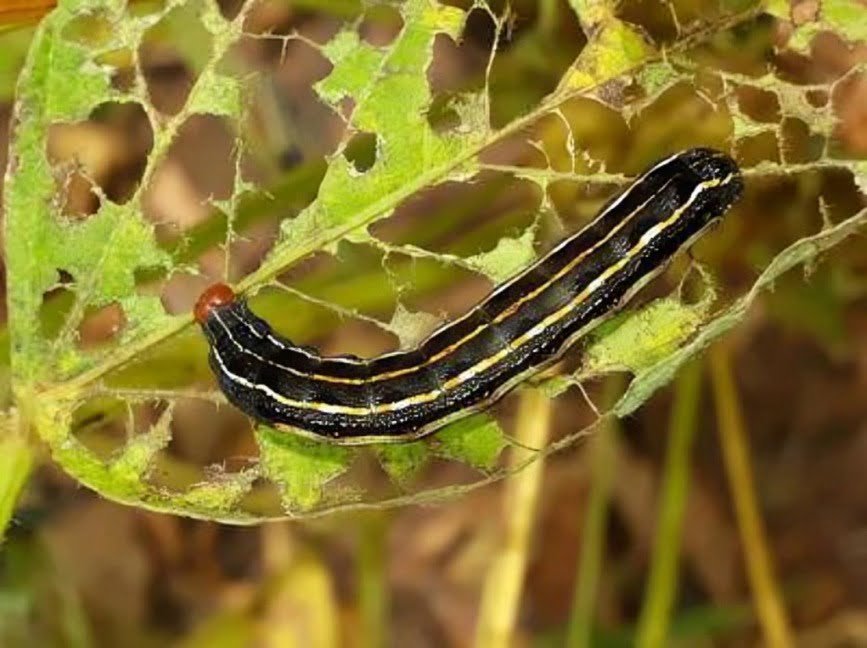
Control strategy
Preventive measures to prevent the occurrence of grape leaf worm
- Collect any infected parts (borrowed leaves) and burn them.
- Fertilizing with nitrogen, phosphorus and potash to give the tree an immune dose against pests.
- Taking care of basic pruning operations in winter.
- Monitor periodically to ensure that parts of it are free of caterpillars and adult butterflies.
- Regular watering of the tree helps strengthen its immunity, raise the humidity around the trunk, and prevent the pest from multiplying
Chemical and organic control recommendations against grape leaf worm
- Organic control :
- Collect butterflies and caterpillars by hand and dispose of them.
- The Trichogramma parasite can be used to parasitize insect eggs.
- Pheromone traps can be used
- Chemical control :
- The tree can be sprayed with Diptrex, Sevin, Gemini, or other contact pesticides.
In conclusion, we would like to note that we, at the world of plants website, offer you all the necessary services in the world of plants, we provide all farmers and those interested in plants with three main services::-
- Artificial intelligence consulting service to help you identify diseases that affect plants and how to deal with them.
- Blog about plants, plant diseases and care of various crops ... You are currently browsing one of her articles right now.
- An application that provides agricultural consultations to clients, as well as a service for imaging diseases and knowing their treatment for free – Click to download the Android version from Google Play Store، Click to download the IOS version from the Apple App Store.
References:
- Mijuskovic, M., & Badulovic, S. (1960). Mass appearance Of Celerio lineata Fabr. Var. livornica Esp. on vines near Titograd in 1958. Plant Protection, (61).
- YOUNUS, M. F., KAMALUDDIN, S., & ATTIQUE, T. (2014). Revision of the genus Hyles Hübner (Lepidoptera: Sphingidae: Macroglossinae) from Pakistan and its cladistic relationship. FUUAST Journal of Biology, 4(2), 173-180
- Sevastopulo, D. G. (1984). Some additional food-plants for Palaearctic Sphingidae (Lepidoptera). Entomologist's Gazette, 35(1), 4-5
- Mass appearance Of Celerio lineata – cabidigitallibrary
- REVISION OF THE GENUS HYLES HüBNER – fuuastjb
- Some additional food-plants for Palaearctic – cabidigitallibrary




